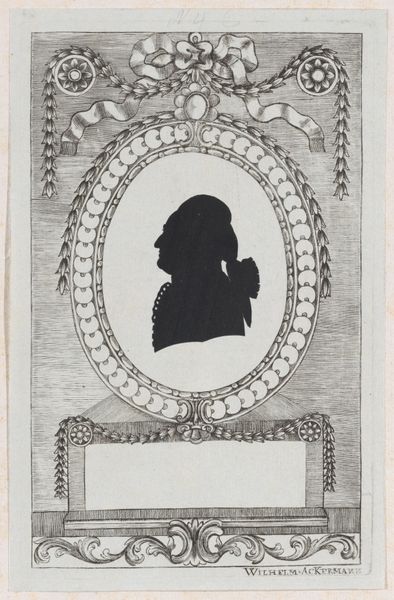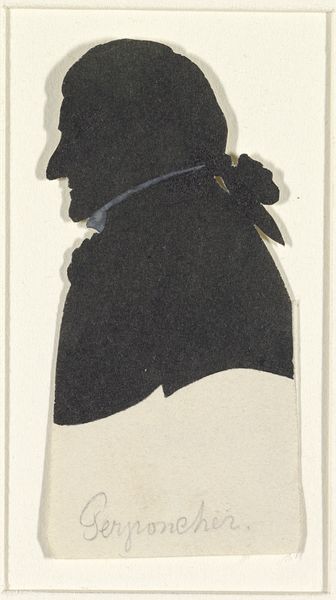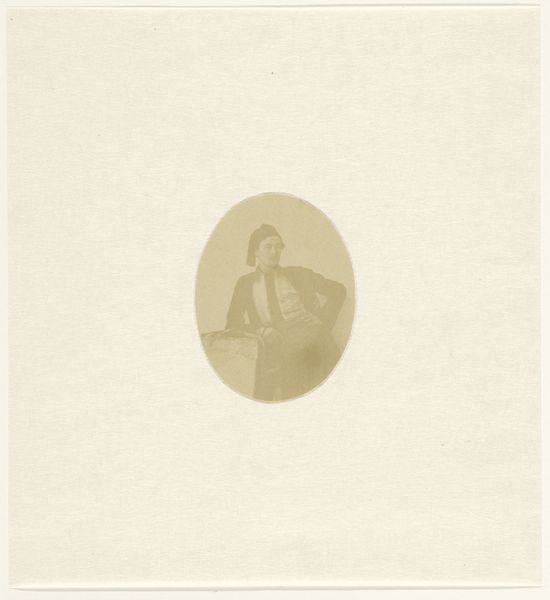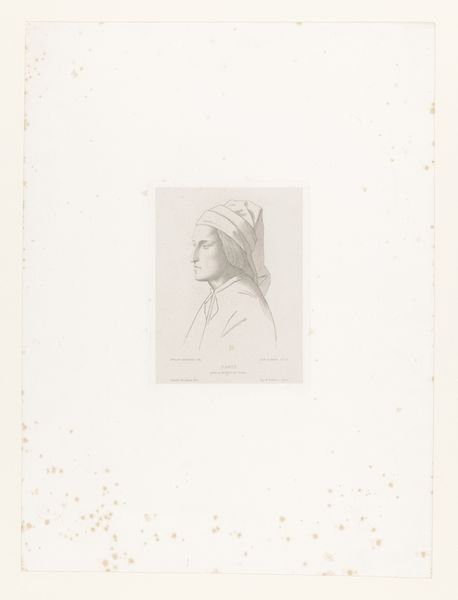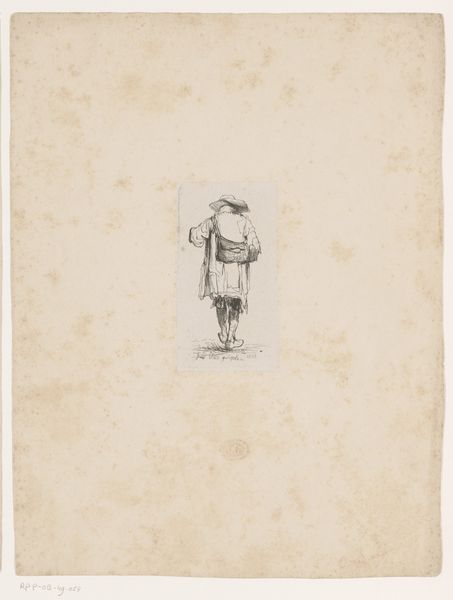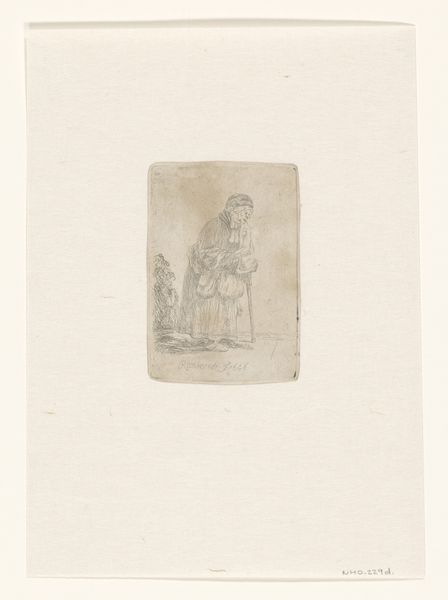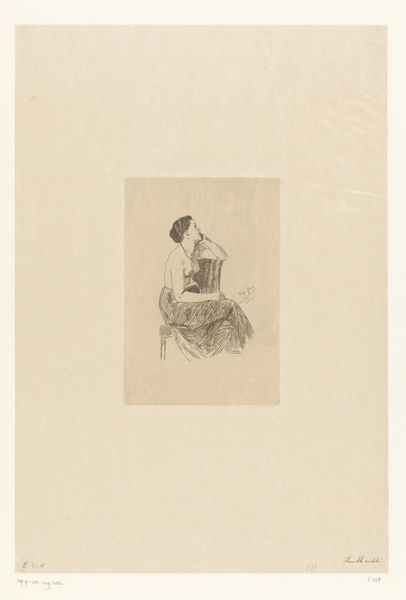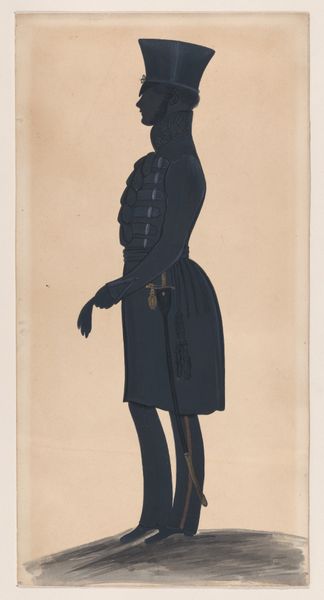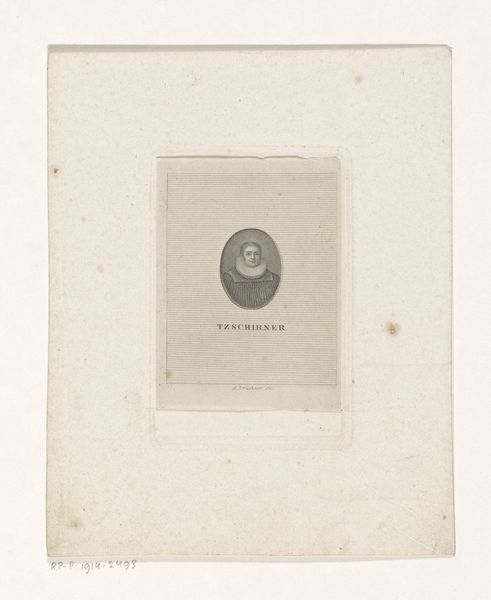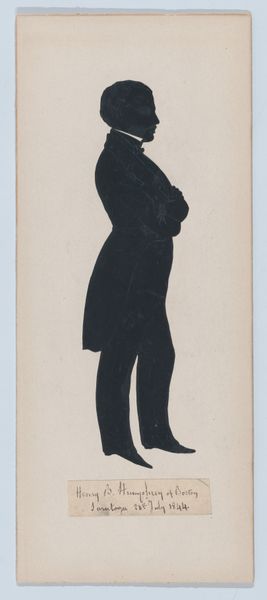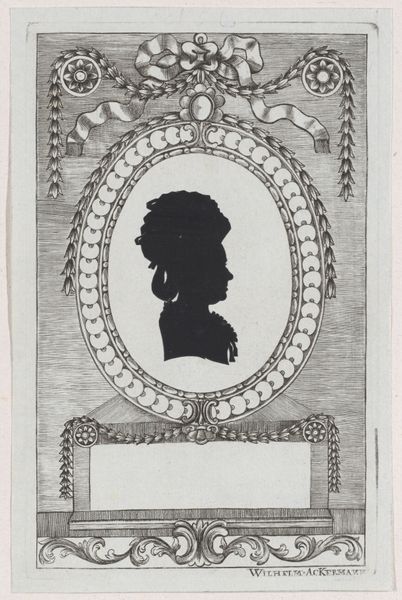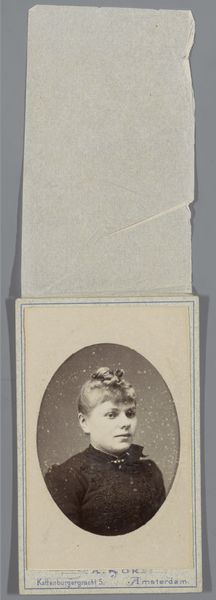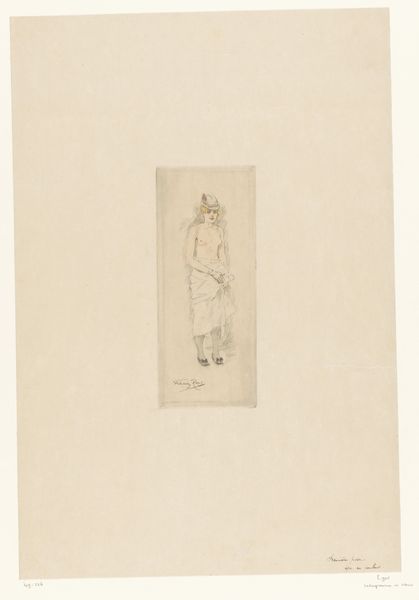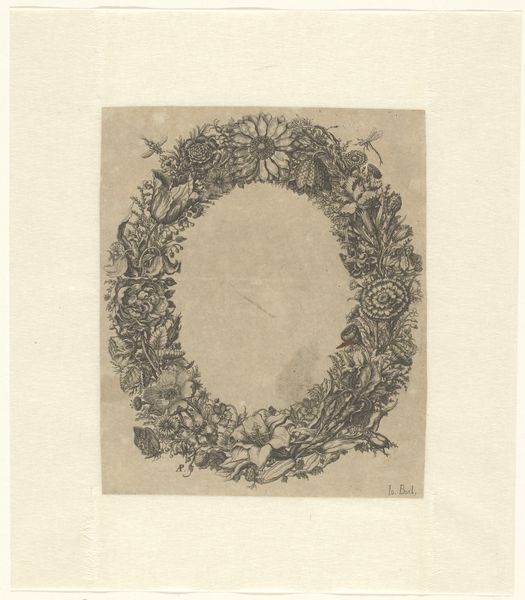
drawing, paper, pencil
#
portrait
#
drawing
#
neoclacissism
#
paper
#
pencil
#
genre-painting
Dimensions: height 95 mm, width 65 mm
Copyright: Rijks Museum: Open Domain
Curator: This striking silhouette is entitled "Portret van M.H. Witbols" created around 1796 by Antoni Zürcher. You can find this drawing in the Rijksmuseum. It’s a piece rendered in pencil on paper. Editor: My first thought? Intimate, yet somehow distant. It's the kind of image that makes you wonder about the story *behind* the profile, what he might have been like, what kind of life he lived. Also, it’s smaller than I thought, so I feel even closer to it as an object. Curator: Indeed! Silhouettes, particularly during the Neoclassical period, served as affordable alternatives to painted portraits. Consider this particular work—pencil on paper, meticulously rendered but also suggestive of mass production through this method. Do you consider this a product of high art? Or everyday craft and commerce? Editor: Absolutely both! Silhouettes walk this fascinating line. Mass production lowers the supposed “aura” that something like a painting gives to portraiture, making likeness more available to the common person. This recontextualizes the value of art in the 18th century. But that being said, look closely at how Zürcher has handled the shading, that hatching on his jacket and cravat – there’s skillful artistry at work here! It’s more than just tracing a shadow. Curator: I agree. It really pushes against simplistic ideas of portraiture from the period. There’s something melancholy in the overall impression, especially considering the damage to the paper around the framed silhouette. Does it strike you the same way? Editor: Yes. The silhouette’s isolation in the middle of this aging, almost ghostly larger frame amplifies the passage of time. These portraits offer us such a haunting way to see how we all grapple with posterity, as patron or artist, artisan or entrepreneur. And beyond all that, this simple and relatively affordable paper product makes me ponder who M.H. Witbols really was. What can you possibly ascertain of a person via a profile cut in a material so accessible? Curator: Ultimately, isn't that what all portraiture attempts, albeit with varying degrees of artifice and material excess? Food for thought, indeed. Editor: It really is. Next time I see one of these I will keep thinking about your comments, especially how labor, the sitter, and artistry converge here.
Comments
No comments
Be the first to comment and join the conversation on the ultimate creative platform.
